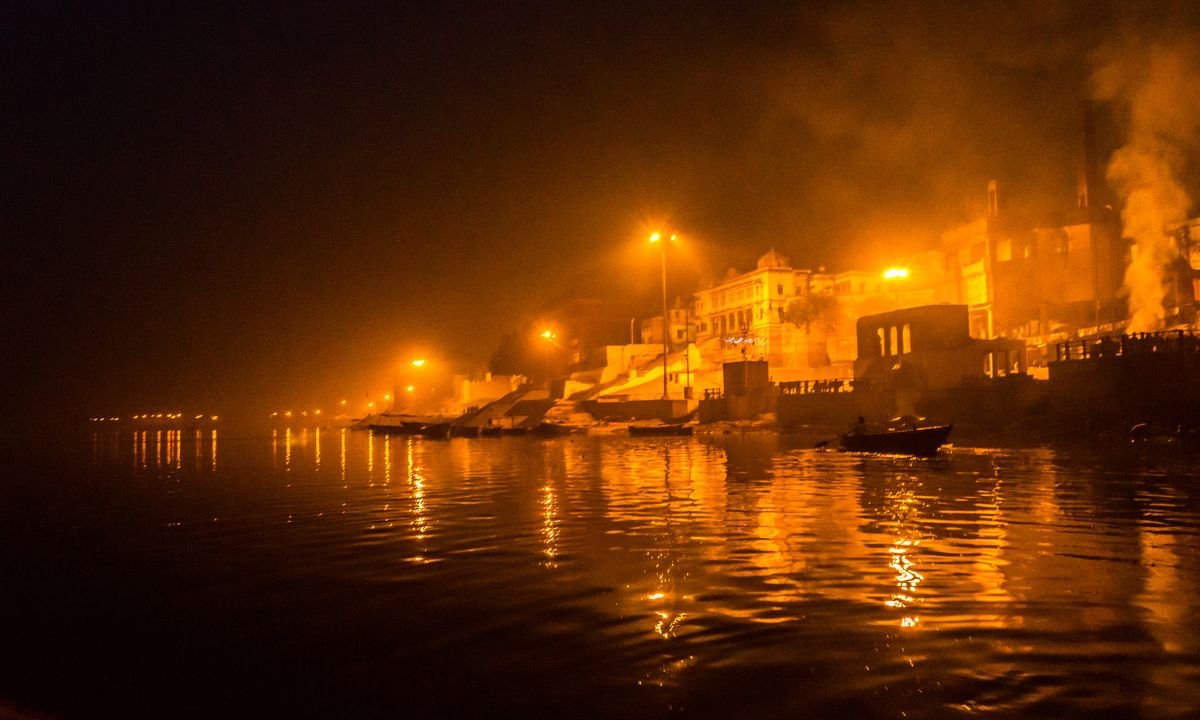Night Photography in Varanasi: Capturing Navratri Celebrations at Dusk
Varanasi's night photography during the Navratri celebrations presents a rare chance to capture the spiritual core of this historic city. For photographers, the way light and shadow interact, the vivid rituals and the calm reflections on the Ganges produce an enchanted environment. Sceneloc8.com will explore methods for photographing the evening aarti and reflections, point out the ideal locations for catching these events, and offer helpful advice for content producers.
Techniques for Capturing Evening Aarti
- Understanding Lighting Conditions
Dashashwamedh Ghat‘s evening aarti is a riot of colors and lights. Since the ambient light reduces as the sun sets, your camera settings must change. To let more light into the lens, choose a wide aperture—f/2.8 or less. Although a slower shutter speed (1/30 to 1/60 seconds) will help capture the movement of flames and devotees, be careful of camera shake; using a tripod is advised.
- Experimenting with Long Exposures
Long exposure photography can elegantly depict the motion of flames and the whirling smoke from incense. To avoid overexposure during longer exposures (1–5 seconds), set your camera to a low ISO (100–200) and, if necessary, apply a neutral density filter. This method can produce a dreamlike quality that improves the spiritual environment.
- Focussing on Reflections
The Ganges offers breathtaking nighttime aarti reflections of the ghats and lights. Position yourself at a low angle close to the edge of the water to catch the activity above and the reflections. A polarizing filter can intensify colors by helping lessen the water’s glare.
Top Photo Locations in Varanasi
Dashashingwamedh Ghat
Description: Energy- and spiritually-driven, most well-known ghat for evening aarti.
Ideal time: Arriving at least half an hour before dusk will help you to guarantee a good position.
Unique Features: The vivid colors of flowers, lighting, and traditional clothes create a beautiful scenario.
Asi Ghat
It is reputed for having a more subdued atmosphere than Dashashwamedh Ghat.
Ideal time: The perfect time for pre-arti photos and post-sunset reflections is late afternoon.
Unique Features: It provides breathtaking views of the sunset across the river, ideal for golden hour pictures.
Manikarnika Ghat
The main cremation ghat provides a deep understanding of life and death.
Ideal time: The perfect time is late evening during continuous rituals.
Unique qualities: catches moving events reflecting Varanasi’s spiritual convictions.
Kedar Ghats
Kedar Ghat is less busy but as lovely, with vibrant stairs down to the river.
Perfect time: early evening when residents get together for ceremonies.
Unique Characteristics: Your pictures will have artistic value from sarees drying on steps.
Boat Trip across the Ganges
A boat journey presents different angles of view on both ghats and their reflections.
Perfect time: just before and right at sunset.
Unique qualities: catches personal events by the river and overhead perspectives of celebrations.
Helpful Advice for Content Creators
- Gear preparation
Make sure you have filters (ND and polarising), a strong tripod, and a wide-angle lens (24mm or below). A quick lens will also be useful in low light.
- Interact with nearby residents
Developing connections with local followers can result in open events revealing deeper narratives about their Navratri rites.
- Capture Traditional Elements
Include traditional features such as diyas (lamps), flowers, and offerings to improve cultural authenticity in your works.
- Aware of Your Surroundings
Respect continuous rituals and personal areas of devotion when you are taking pictures. This will guarantee that you capture real events free from disturbance and improve your experience.
Challenges Photographers Could Come Across
Varanasi photography has a unique set of difficulties.
Popular sites can get packed; arrive early or visit less well-known ghats.
Lighting Variability: Lighting changes quickly as evening sets; be ready to alter settings often.
Cultural Sensitivity: Always get permission before photographing someone engaged in a rite closely; knowledge of local customs is vital.
Conclusion
Night photography during Navratri in Varanasi is about submerging oneself in a spiritual journey that reflects centuries-old customs. It is not only about catching pictures. Understanding lighting techniques, investigating several ghats, and politely interacting with residents will help photographers generate gripping stories that appeal to audiences.

